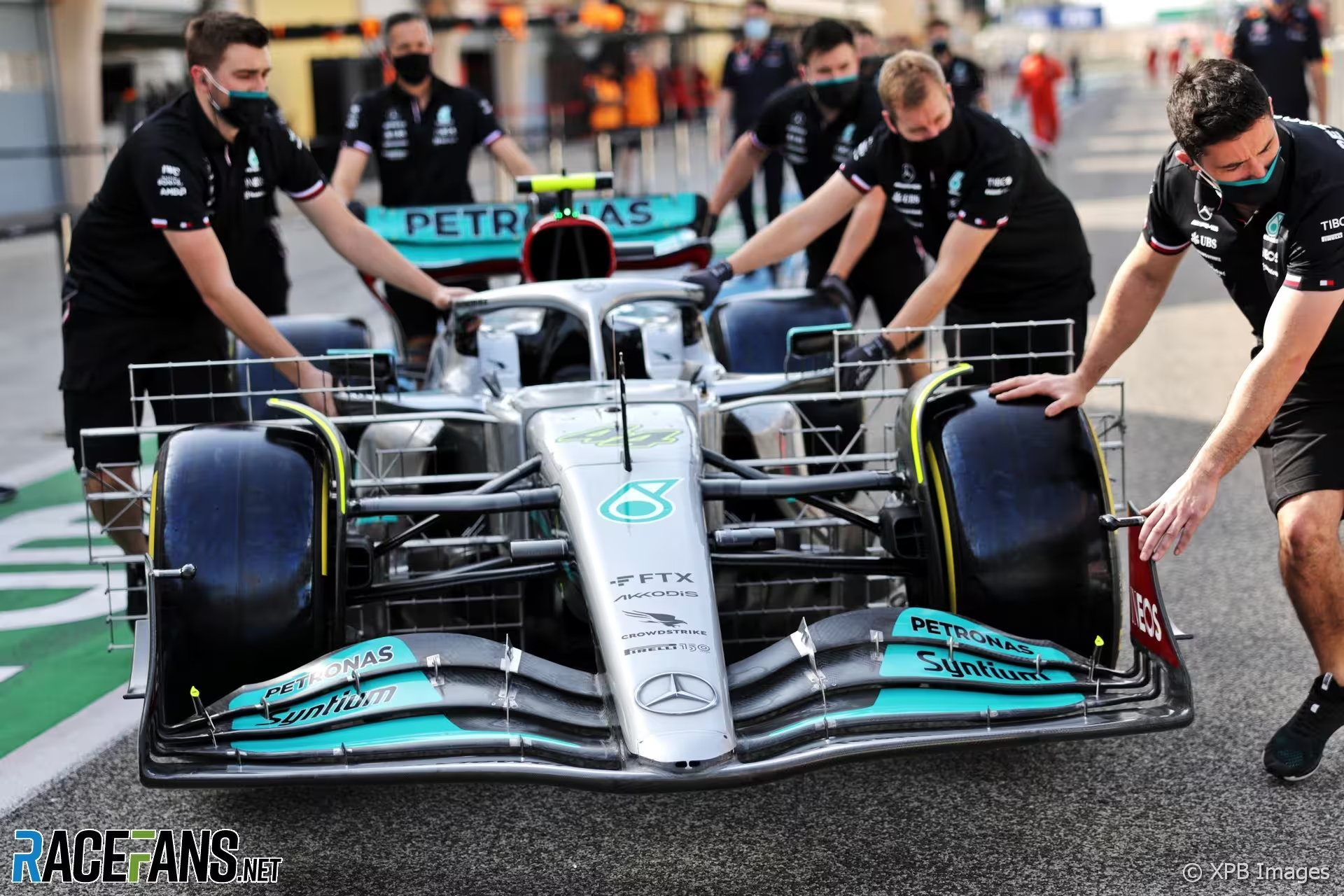Mercedes failed to recognise the weaknesses in their approach which led them to produce uncompetitive cars over the past two seasons, says the team’s technical director James Allison.
The team which won eight consecutive constructors’ championships until 2021 scored only a single win in the past two seasons as it struggled to get to grip with F1’s new ground effect technical regulations. However it has made gains with its W15 since the season began and won the last two races.
Allison said the team did not realise soon enough that the structure of its technical departments kept it from finding solution to the problems it faced.
“The most significant thing that I would say we could point to inwards at ourselves and say as a criticism is that the way that we had found of working in the previous set of rules was very effective for the previous set of rules,” Allison told the official F1 channel.
“I don’t just mean like the way we shape the front wing or the particular way that we handled the tyre squirt at the rear of the car. I mean that the way the key engineering groups interacted with one another in the team. So the aerodynamics with vehicle dynamics, vehicle dynamics with the track, and track with both of those two groups.
“The way that we were set up in the old world worked just fine. And not just fine, it worked for eight seasons on the trot, something no one has ever done before, it was pretty impressive.
“But we, to a large extent, carried on with that way of working together under different circumstances and were insufficiently self-critical to recognise that there were weaknesses inherent in that approach in the new world that didn’t matter in the old. We definitely paid a price for that.”
Mercedes regularly encountered problems with their cars bouncing as they struggled to optimise the performance of the powerful floors allowed by the new rules.
“The cars are all so uncomfortably near to the ground in this set of rules that suspension and aerodynamics have to be really, really, really tightly bound up with one another,” said Allison. “In the old world, they sort of needed to be cousins, but they didn’t need to be really, really properly embedded in each other’s worlds.
“Actually, it would have been inefficient in the old world to spend time fretting about the interaction of one group on the other in a particularly intense way, because they were sort of orthogonal to each other to some extent. Now they are just…
Click Here to Read the Full Original Article at RaceFans…

